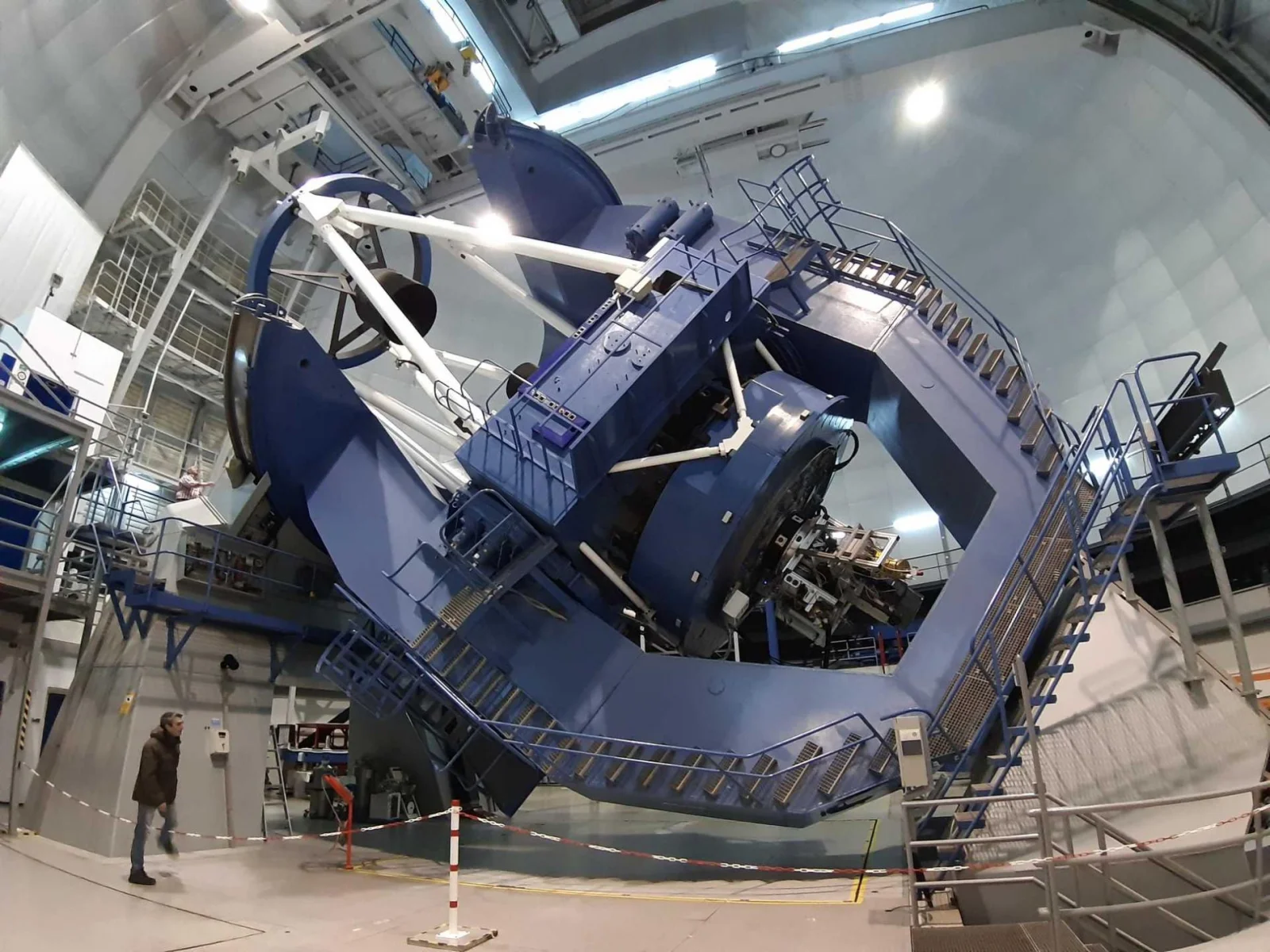Ground Instrumentation
CARMENES


Optical and infrared spectrograph, searching for Earth-like exoplanets orbiting the habitable zone of cold stars

CARMENES (Calar Alto high-Resolution search for M dwarfs with Exoearths with Near-infrared and optical Échelle Spectrographs) is a project carried out by a consortium of eleven German and Spanish institutions, including the IEEC. Installed at the Calar Alto Observatory in Almería, the CARMENES instrument has been designed to search for Earth-like planets in the habitable area, which is the region around a star where conditions allow the presence of liquid water.
The goal of CARMENES, which started its official observing activity on 1 January 2016, is to discover planets orbiting the so-called M dwarfs. To achieve this milestone observations in both visible and infrared light are required, and CARMENES is the only instrument capable of performing this dual observation.
Since its launch, the CARMENES consortium has already announced the discovery of dozens of new planets, some of them orbiting very close stars. In addition, the instrument is producing new results in the area of exoplanetary atmosphere characterisation. Thanks to its high-resolution capabilities and its red and near-infrared coverage, the instrument is ideally suited to investigate the presence of molecules and atomic species in different layers of hot planetary atmospheres.
THE IEEC CONTRIBUTION
The IEEC plays an essential role in CARMENES, as it is responsible for the data scientific preparation and exploitation. The Institute is also responsible for important technological tasks on the instrument, such as the construction of the Instrument Control System (ICS). The IEEC is also responsible for the construction of the observation scheduler, a complex software that takes into account a large number of variables (object properties, prioritisation, environmental information) to choose the optimal star to observe at any given time.
